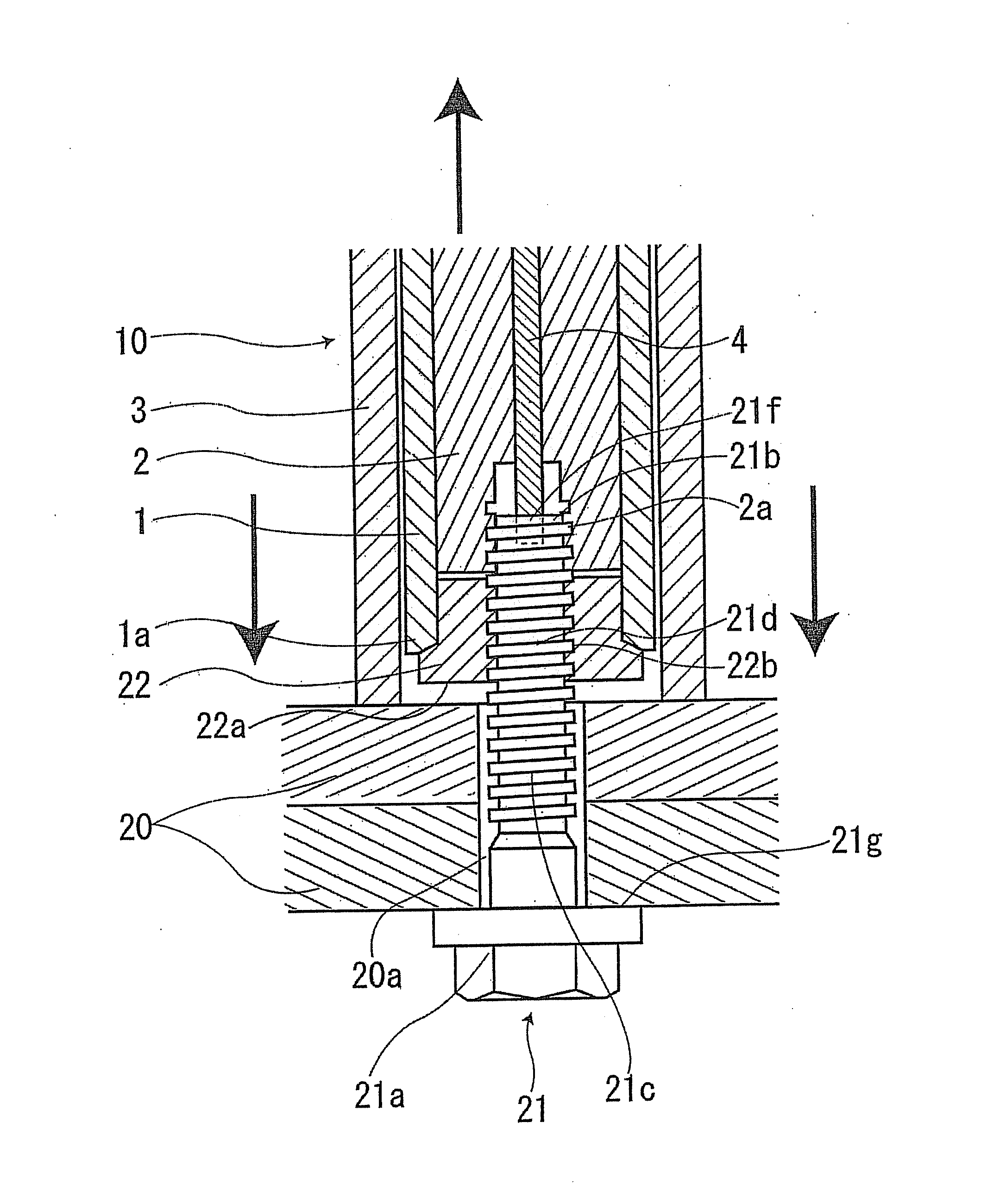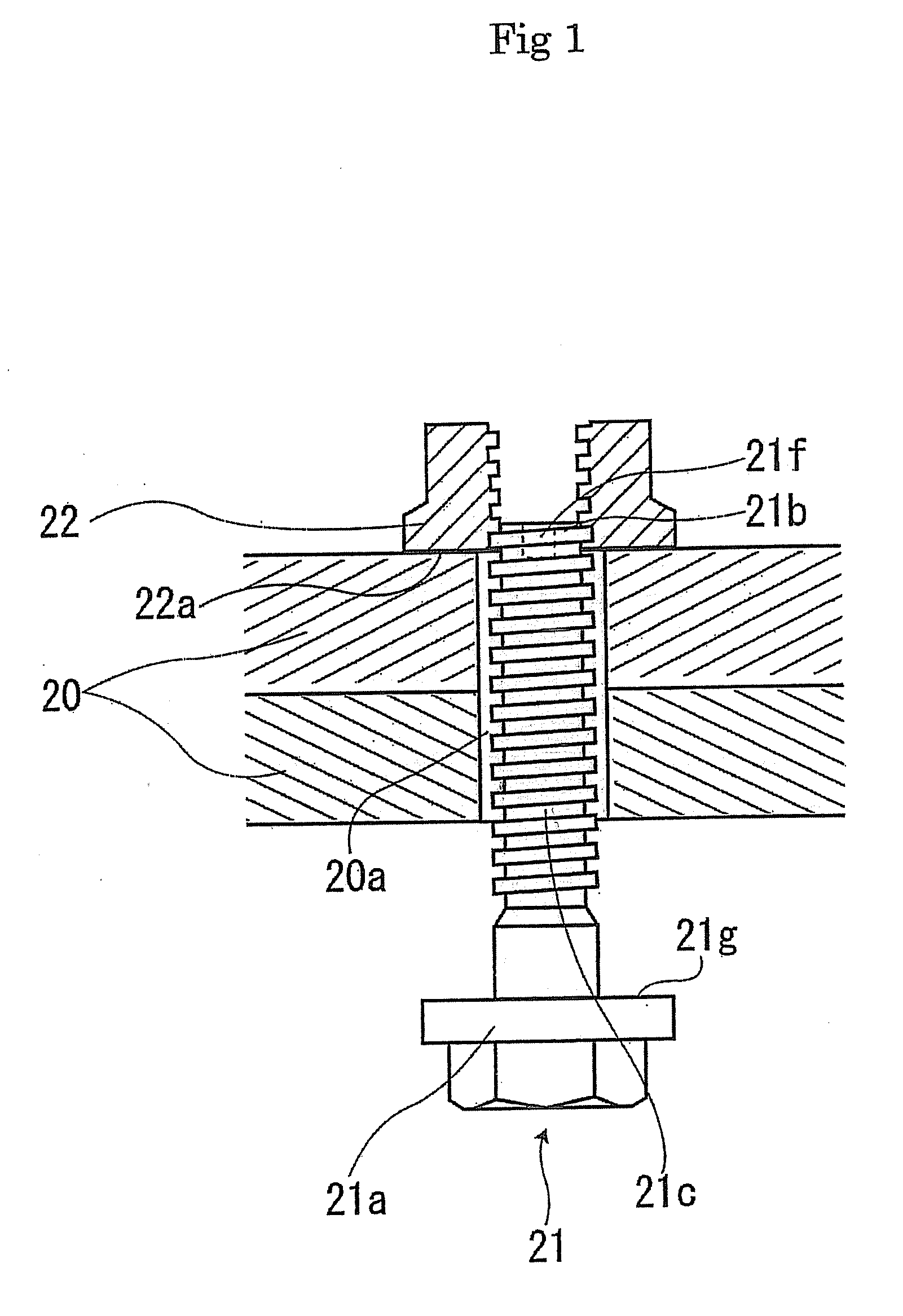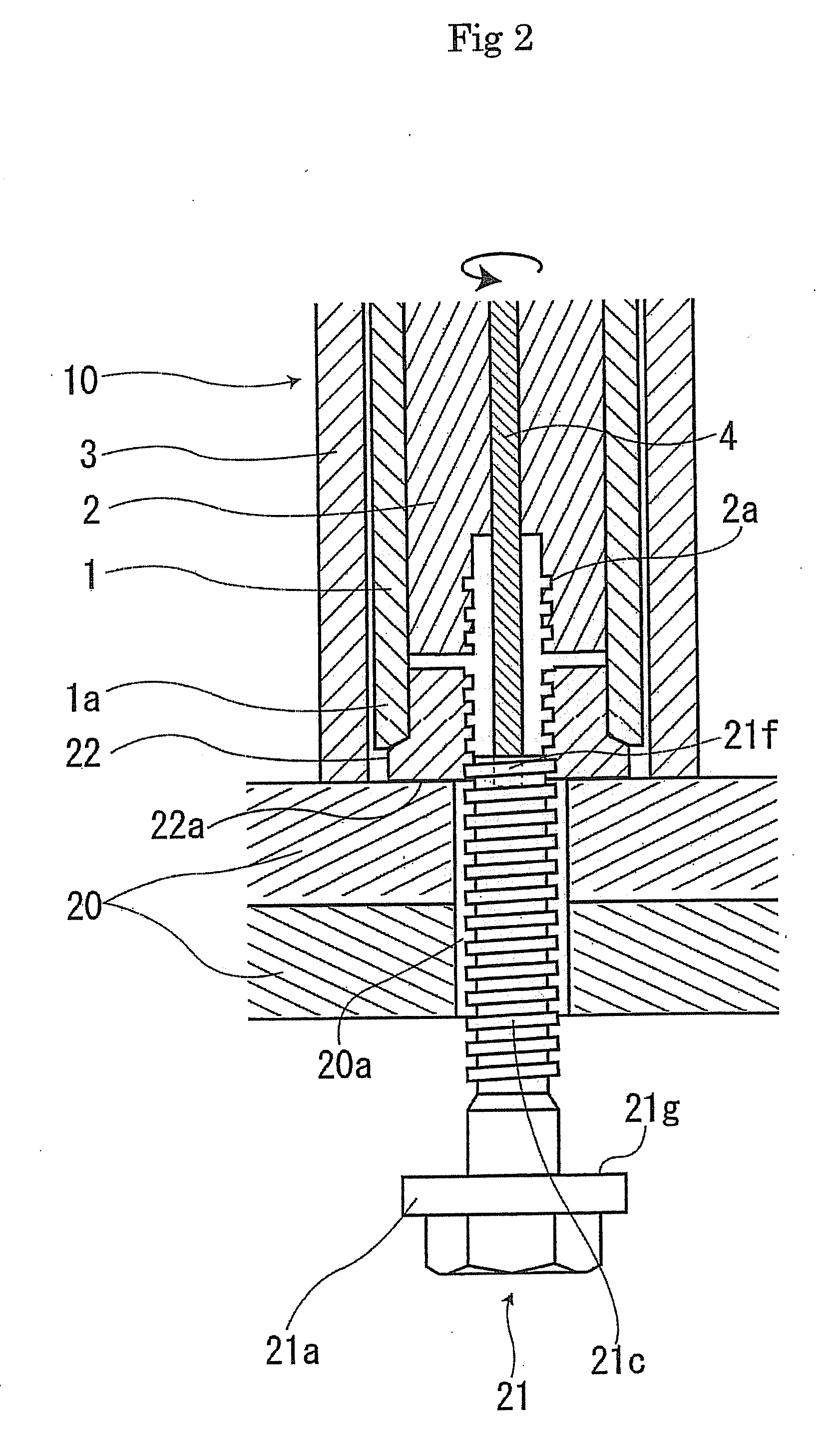Fastening tool
a technology of fastening and tool, which is applied in the direction of wrenches, screwdrivers, metal-working hand tools, etc., can solve the problems of loosing bolts and nuts, and affecting the performance of bolts and nuts
- Summary
- Abstract
- Description
- Claims
- Application Information
AI Technical Summary
Benefits of technology
Problems solved by technology
Method used
Image
Examples
first embodiment
[0051]A description will be given below of a preferable embodiment (a first embodiment) of the present invention with reference to the accompanying drawings.
[0052]An engagement concave portion 21f depressed in as a hexagonal shape or the like is provided in a leading end of a shaft portion 21c of a bolt 21 used in the present invention. In this case, a nut 22 in accordance with the embodiment is constituted by a hexagonal nut. However, the nut 22 is not limited to the hexagonal nut, but may be constituted by any nut such as a square nut, a dodecagonal nut, a torque nut.
[0053]The bolt 21 is passed through a hole 20a of a fastened member 20, and the nut 22 is lightly fastened to a leading end 21b of the bolt 21 (a state in FIG. 1).
[0054]A fastening tool 10 used in the present invention is mainly constituted by a tubular fastening member 1, a spindle member 2 stored in an inner portion of the fastening member 1, an inner member 4 stored in an inner portion of the spindle member 2, and ...
second embodiment
[0063]Next, FIG. 8 shows an explanatory view showing a second embodiment, and a description will be given of the second embodiment. In this second embodiment, a normal bolt 23 is used. In this case, the normal bolt 23 means a bolt in which the engagement concave portion 21f (the first embodiment) is not formed in the leading end of the shaft portion of the bolt.
[0064]The bolt 23 is passed through the hole 20a of the fastened member 20, the nut 22 is thereafter screwed into the bolt 23 so as to be temporarily fastened until the seat surface 22a of the nut 22 comes into contact with the fastened member 20, and the fastening tool 10 is set. The threaded hole 2a of the spindle member 2 is screwed into the leading end of the bolt 23 by rotating the spindle member 2, and the spindle member 2 grips the bolt 23. At this time, in order to prevent the leading end of the spindle member 2 from being brought into contact with the upper end of the nut 22, the structure is made such that if the le...
third embodiment
[0065]Next, a description will be given of a third embodiment. A fastening tool used in this third embodiment basically has the same structure as the fastening tool 10 used in the first embodiment, however, is structured such that the inner portion of the spindle member 2 is provided with a fixing member 5 in which a leading end thereof is engaged with the engagement concave portion 21f provided in the leading end 21b of the bolt 21 so as to be slid in an axial direction, in place of the inner member 4. In this case, the fixing member 5 is not rotated as is different from the inner member 4 in accordance with the first embodiment.
[0066]In this third embodiment, the bolt 21 is passed through the hole 20a of the fastened member 20, the nut 22 is thereafter screwed into the bolt 21 so as to be temporarily fastened until the seat surface 22a of the nut 22 comes into contact with the fastened member 20, and the fastening tool 11 is set. At this time, the leading end of the fixing member ...
PUM
| Property | Measurement | Unit |
|---|---|---|
| reaction force | aaaaa | aaaaa |
| rotation | aaaaa | aaaaa |
| axial force | aaaaa | aaaaa |
Abstract
Description
Claims
Application Information
 Login to View More
Login to View More - R&D
- Intellectual Property
- Life Sciences
- Materials
- Tech Scout
- Unparalleled Data Quality
- Higher Quality Content
- 60% Fewer Hallucinations
Browse by: Latest US Patents, China's latest patents, Technical Efficacy Thesaurus, Application Domain, Technology Topic, Popular Technical Reports.
© 2025 PatSnap. All rights reserved.Legal|Privacy policy|Modern Slavery Act Transparency Statement|Sitemap|About US| Contact US: help@patsnap.com



